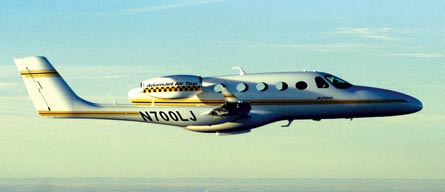Adam to increase output but rival Sino Swearingen is forced to lay off workers
Adam Aircraft has raised $93 million through a private funding round that has brought in new US and European investors. The funding has more than doubled the company's capitalisation, Adam says, and will be used to accelerate certification of the A700 very light jet and ramp up production of the A500 piston twin.
Delays in ramping up production, meanwhile, have led Sino Swearingen Aircraft (SSAC) to lay off 140 workers while it installs rate tooling for the SJ30 light jet at its fabrication and subassembly plant in Martinsburg, West Virginia and final assembly and completion site in San Antonio, Texas.
|
|---|
| New venture capital will be used to accelerate certification of the A700 very light jet |
SSAC now expects to deliver only two SJ30s this year and 17 next year, down from 10 and 30 respectively, but still expects to reach its target of 100 aircraft a year by 2010, says chief financial officer Kelly Simmons. The Taiwan-backed company has the funding to ramp up, he says, "but the tooling in place is not sufficient to get to rate".
US certification of the SJ30 was achieved in October last year, and the first customer aircraft is now in flight test, but "we are still in the period, into early 2007, of creating the production line", says Simmons. "We had overhired over time, and as it became more clear what the schedule is, we have had to adjust."
Englewood, Colorado-based Adam expects to receive full type certification for the all-composite A500 around the end of August, and production certification before the end of the third quarter, by which time the delivery rate is scheduled to have reached one a month. The company says it is "on track" for a two-a-month rate by year-end.
The first two customer A500s have been leased back for development of "Design Change 2", which adds night/instrument flight rules capability and pressurisation and for which 150h function and reliability testing remains to be completed before an amended type certificate can be issued by the US Federal Aviation Administration.
Design Change 2 includes the addition of wing leading-edge cuffs and stall strips, which reduce stall speeds by 4kt (7.5km/h), plus a 20USgal (75 litres) increase in useable fuel and changes to the cockpit for night and IFR flying. Adam says FAA flight tests of the configuration have been completed.
The first fully production-conformed A700 twinjet, aircraft number 3, is scheduled to fly in October, joining proof-of-concept and pre-production A700s, which have logged more than 580h.
A second conforming aircraft is to fly early next year, and Adam is projecting a 12- to 15-month flight-test programme leading to full certification.
Source: Flight International

















